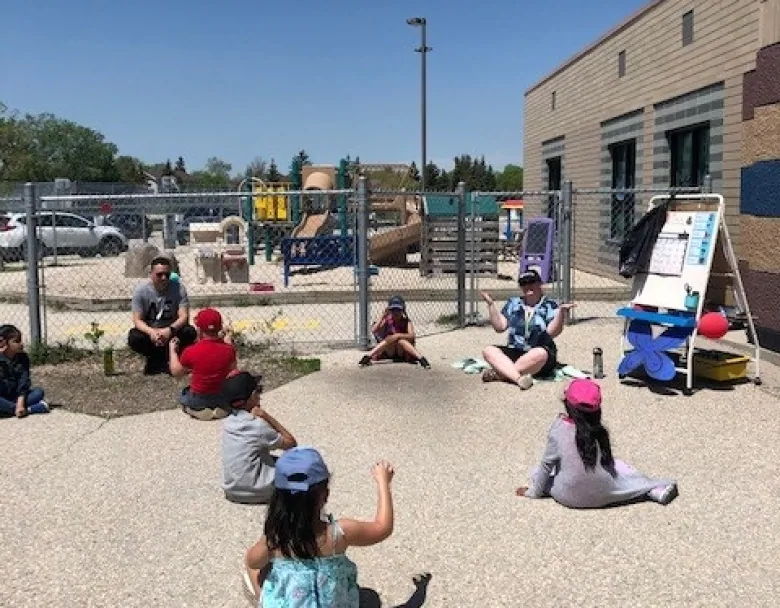This week, several provinces joined Quebec in re-opening school doors for teachers and some students. Canadian peers across the nation are watching carefully to see what classes might look like in the fall.
At École Constable Edward Finney School in Winnipeg, everyone from teachers and educational assistants to custodians welcomed students who returned to school on Monday. But it wasn’t quite class as usual.
Families lined up by the chain-link fence beside colourful markers spaced two metres (six-and-a-half feet) apart. After answering a few health screening questions, kids bid farewell to parents in the yard before entering the school and paused to wash their hands at a sanitizing station just inside the doors. New signs remind everyone about physical distancing, as do shoeprint-emblazoned floor markers.
Students — sitting evenly spaced out in classrooms and using only designated areas of the school — spent about two hours with teachers, some of whom taught their lessons outside on a beautiful spring day. After the kids headed home, staff held a midday cleaning blitz, including sanitizing learning materials and high-touch surfaces.
In the afternoon, teachers started from the top for a fresh batch of students.

This week, British Columbia, Manitoba, New Brunswick and Prince Edward Island joined Quebec in re-opening school doors, welcoming teachers and bringing back a limited number of students part time. Across provinces, districts and even individual schools, these educators are taking different approaches — and their Canadian peers are watching carefully to see what classes might look like in the fall.
Though about 60 kids returned Monday, Finney principal Karen Hiscott estimates that 70 per cent of the school’s 475-student population will return in some manner this month — once a week for some, and more often for others.
“Everybody’s at a different comfort level,” she said. “We have this window of time right now in Manitoba … It’s the time to dip our toes into the water to see what this is all going to look like.”

Manitoba’s fortune in containing cases of coronavirus is giving its educators the chance to reconnect with students — primarily those with special needs, and those who’ve had the most difficulty with remote learning this spring — in person. They’re also taking public health measures and the needs of students, families and teachers into account, Hiscott said.
The process involves careful planning over the number of students so that schools adhere to public health guidelines. After educators voiced concerns about childcare and challenges in balancing remote and in-class teaching, Hiscott said her school division stepped in with support.
In-school daycare operations were reopened, new tech resources were provided and successful remote learning situations were preserved. Communication with parents has continued throughout, with regular check-ins at a rate

